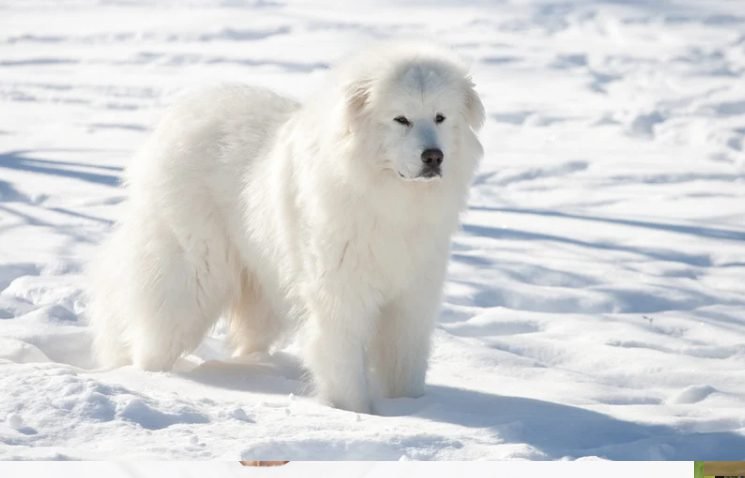The Great Pyrenees, affectionately known as the “Pyr,” is a majestic and gentle giant with a rich history as a livestock guardian. Originating from the Pyrenees Mountains in Southwestern Europe, these dogs were bred to protect sheep from predators like wolves and bears. Today, they are cherished family companions, known for their loyalty, calm demeanor, and protective instincts.

📏 Great Pyrenees Size & Growth Chart
Great Pyrenees are large dogs with impressive stature:
| Age | Height (Males) | Height (Females) | Weight (Males) | Weight (Females) |
|---|---|---|---|---|
| Puppy | 10–15 inches | 10–14 inches | 20–40 lbs | 15–35 lbs |
| 6 months | 20–25 inches | 18–23 inches | 40–70 lbs | 35–60 lbs |
| 1 year | 27–32 inches | 25–29 inches | 100–130 lbs | 85–120 lbs |
| Adult | 27–32 inches | 25–29 inches | 100–130 lbs | 85–120 lbs |
Note: Growth rates can vary; consult your veterinarian for guidance.

🧼 Grooming Your Great Pyrenees
The Great Pyrenees boasts a thick, double coat that requires regular grooming to maintain its health and appearance:
- Brushing: Brush 2–3 times per week to remove loose hair and prevent matting. During shedding seasons (spring and fall), daily brushing may be necessary.
- Bathing: Bathe every 6–8 weeks or as a needed using a dog-specific shampoo to preserve natural oils.
- Ear Care: Check and clean ears weekly to prevent infections.
- Nail Trimming: Trim nails regularly to prevent overgrowth and discomfort.
- Dental Hygiene: Brush teeth at least once a week to prevent dental issues.
Avoid shaving their coat, as it serves to regulate body temperature and protect their skin.

🥗 Diet & Nutrition
Great Pyrenees are large breed dogs with specific dietary needs:
- Puppy Diet: Feed a large-breed puppy formula to support slow and steady growth, reducing the risk of joint issues.
- Adult Diet: Provide high-quality dog food formulated for large breeds, ensuring balanced nutrition.
- Meal Frequency: Feed 2–3 times per day to prevent bloat, a condition to which they are prone.
- Portion Control: Monitor weight and adjust food intake to maintain a healthy body condition.
Consult your veterinarian for personalized dietary recommendations.
🧠 Training & Socialization

Training a Great Pyrenees requires patience and consistency:
- Positive Reinforcement: Use treats, praise, and play to encourage desired behaviors.
- Early Socialization: Expose them to various people, animals, and environments from a young age to promote confidence and reduce territorial tendencies.
- Basic Commands: Teach essential commands like sit, stay, and come.
- Leash Training: Due to their size, leash manners are crucial for safe walks.
- Consistency: Maintain a regular training routine to reinforce learning.
Avoid harsh training methods, as they can lead.
🐶 Great Pyrenees Puppies

Bringing a Great Pyrenees puppy into your home is a rewarding experience:
- Socialization: Introduce them to various stimuli early on to promote well-rounded behavior.
- Training: Start basic obedience training promptly, using positive reinforcement techniques.
- Health Care: Schedule regular vet for check-ups and vaccinations.
- Exercise: Provide age-appropriate physical activity to support healthy development.
Ensure your home is prepared for a large breed puppy’s needs.
❤️ Final Thoughts

The Great Pyrenees is a noble and affectionate breed, ideal for families with the time and space to meet their needs. Their gentle nature, combined with their protective instincts, makes them excellent companions. With proper care, training, and attention, a Great Pyrenees can be a loyal and loving member of your family for many years.

Leave a Reply